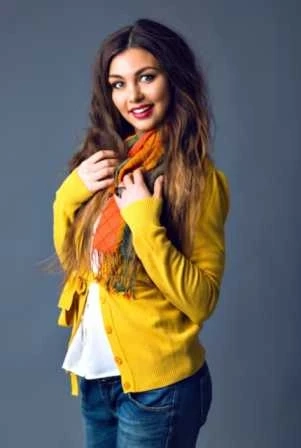Women\'s cardigans have a rich and fascinating history, evolving from their humble beginnings as functional knitwear into versatile and stylish wardrobe essentials. Over the years, cardigans have undergone significant transformations in terms of design, materials, and cultural significance. In this article, we\'ll explore the fascinating evolution of women\'s cardigans, tracing their journey from classic to contemporary fashion.
1.Classic Cardigans: Functional Beginnings
The origins of cardigans can be traced back to the 19th century, where they were initially designed as practical and utilitarian garments. They were named after James Brudenell, the 7th Earl of Cardigan, who was a British military leader during the Crimean War. These early cardigans were button-up sweaters with a V-neck and typically made from wool. They were favoured by the military for their warmth and ease of wear.
2.1920s to 1940s: Hollywood Glamour
The 1920s saw the cardigan make its debut in the world of high fashion, thanks in part to Coco Chanel, who popularised cardigans for women as part of her groundbreaking designs. Chanel\'s cardigans were often made of luxurious materials like cashmere and silk, and they were characterised by their elegant simplicity.
During the 1930s and 1940s, Hollywood stars like Grace Kelly and Marilyn Monroe embraced the cardigan, further solidifying its place in women\'s fashion. These cardigans were often paired with pencil skirts and tailored trousers, creating a sophisticated and timeless look.
3.1950s: The Preppy Era
In the 1950s, cardigans became an iconic symbol of preppy fashion, thanks to the influence of Ivy League style. Women\'s cardigans were worn as part of a coordinated outfit, often paired with A-line skirts, loafers, and pearl necklaces. This decade also saw the rise of the twinset, a matching cardigan and sweater set that became a quintessential wardrobe staple for women.
4.1960s and 1970s: Counterculture and Bohemian Vibes
During the 1960s and 1970s, cardigans underwent a transformation as they were embraced by the counterculture and the emerging bohemian fashion movement. Cardigans took on a more relaxed and free-spirited look, with oversized and chunky knits being popular choices. Cardigans were often worn with bell-bottoms, flowing maxi dresses, and fringe vests, reflecting the fashion trends of the era.
5.1980s: Power Dressing and Shoulder Pads
The 1980s brought about bold and dramatic fashion choices, and cardigans were no exception. This era saw the rise of power dressing, characterized by strong shoulders and assertive silhouettes. Cardigans were often paired with padded blazers and shoulder-padded dresses, creating a structured and powerful look.
6.1990s: Grunge and Minimalism
The 1990s saw a return to minimalism and simplicity in fashion, with cardigans being a key piece in the wardrobes of both grunge enthusiasts and proponents of casual chic. Cardigans were often oversized and worn with slouchy jeans, flannel shirts, and combat boots in the grunge scene. Meanwhile, the minimalist approach favored fitted cardigans in solid colors, often paired with slip dresses and minimal accessories.
7.2000s to Present: Contemporary Versatility
In the 2000s and beyond, women\'s cardigans have continued to evolve, embracing contemporary trends while maintaining their timeless appeal. Here are some key developments in contemporary cardigan fashion:
- Diverse Styles: Cardigans now come in a wide variety of styles, including cropped, longline, waterfall, and cocoon cardigans, among others. This diversity allows women to choose cardigans that suit their personal style and body type.
- Materials and Sustainability: With advancements in textile technology, cardigans are now made from a wide range of materials, including eco-friendly options like organic cotton and recycled fibers. Sustainability has become a significant focus in contemporary fashion.
- Seasonal Adaptability: Cardigans have become adaptable to all seasons, with lightweight options for spring and summer and heavier, cozy knits for fall and winter. This adaptability makes them a year-round wardrobe staple.
- High Fashion Influence: Contemporary fashion designers have continued to feature cardigans in their collections, often pushing the boundaries of design. Cardigans with unique embellishments, asymmetrical cuts, and unexpected details have become runway staples.
- Online Shopping: The rise of online shopping has made it easier than ever to explore and discover a wide range of cardigan styles. Online retailers offer a vast selection of cardigans, allowing women to find the perfect cardigan to complement their wardrobe.
In conclusion, the evolution of women\'s cardigans from classic to contemporary fashion reflects the ever-changing landscape of style and culture. From their utilitarian beginnings to their current status as versatile fashion staples, cardigans have adapted to the needs and desires of each generation. Today, women\'s cardigans continue to be a symbol of style and comfort, offering endless possibilities for self-expression and creativity in the world of fashion.



